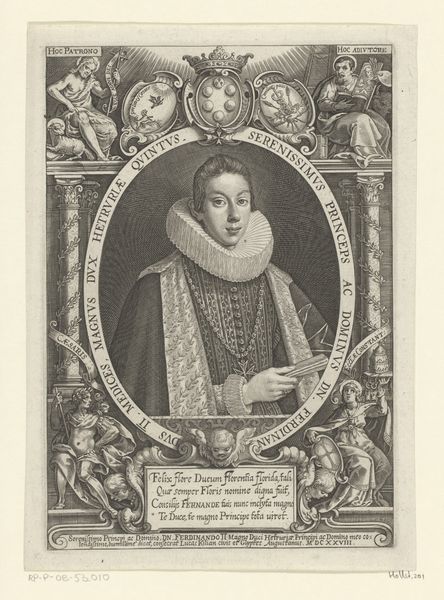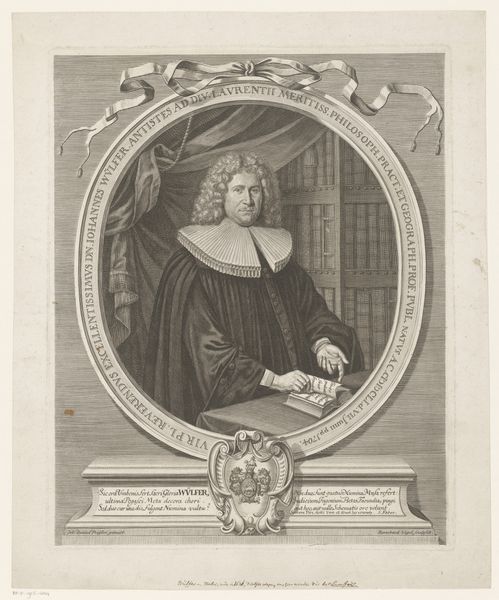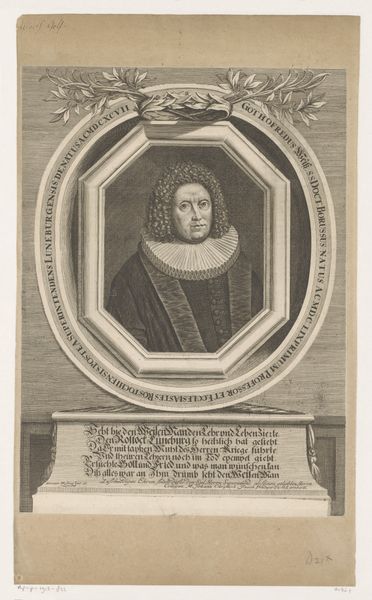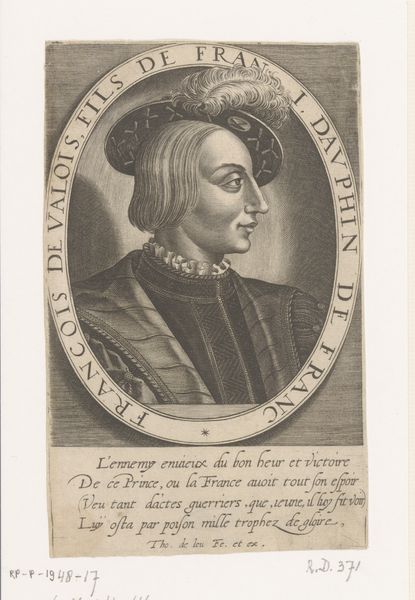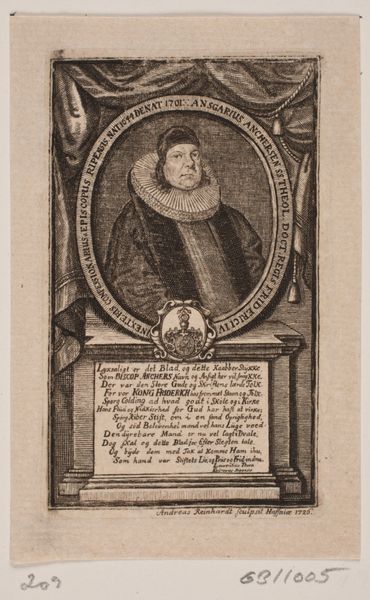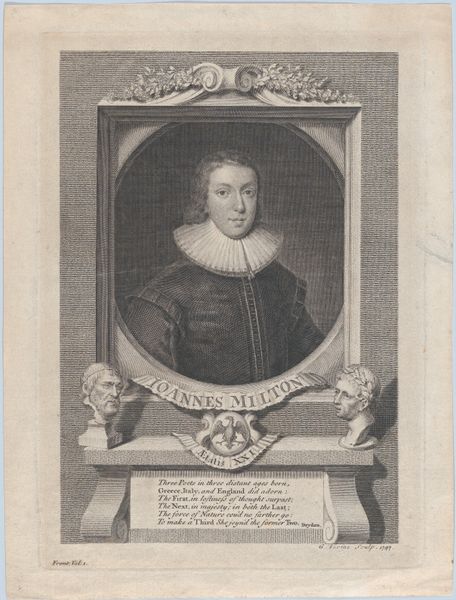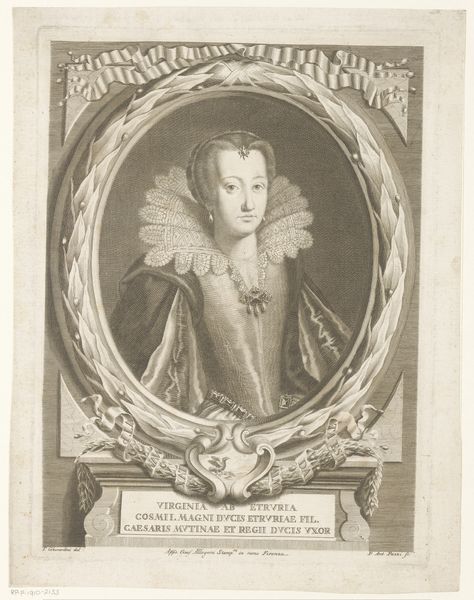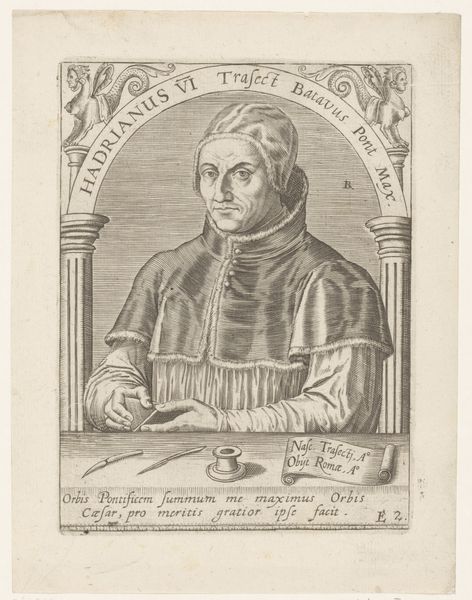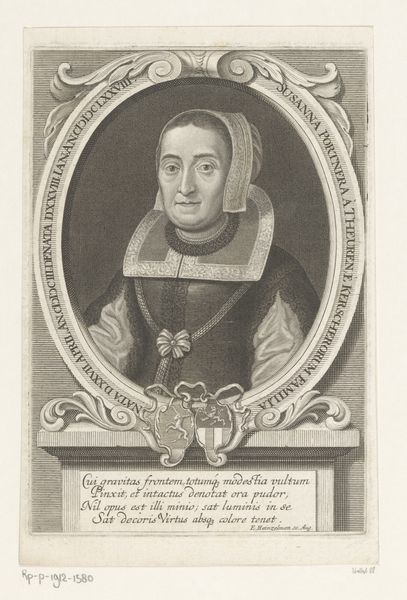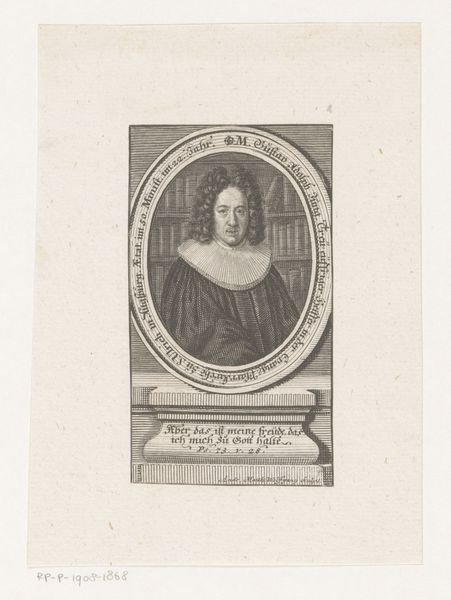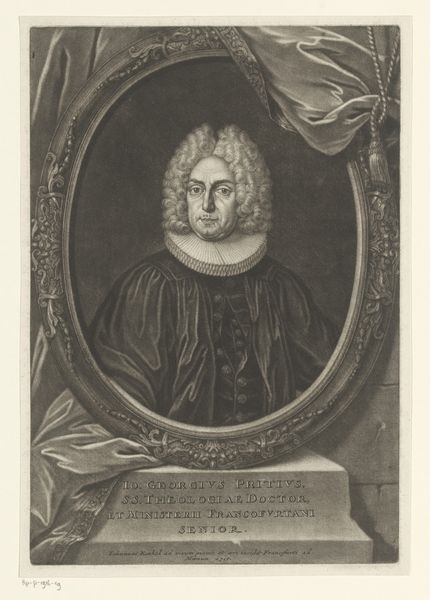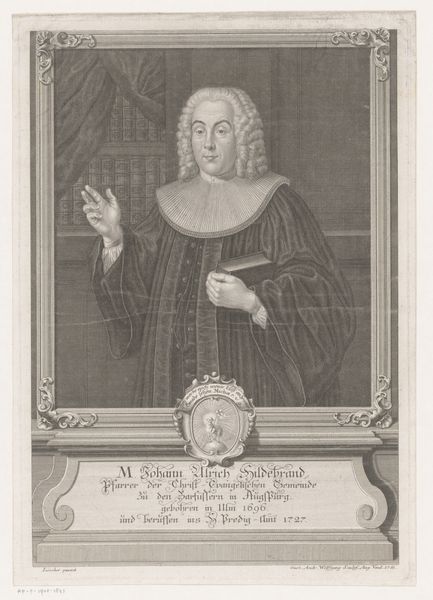
drawing, print, paper, engraving
#
drawing
#
baroque
# print
#
sculpture
#
paper
#
history-painting
#
engraving
Dimensions: 352 × 249 mm (plate); 427 × 323 mm (sheet)
Copyright: Public Domain
Editor: We’re looking at a print, “Maria Magdalena of Austria,” potentially dating from between 1666 and 1761, by Adriaen Haelwegh. It's located at the Art Institute of Chicago. I find the level of detail fascinating, but the portrait itself feels a bit...severe. What strikes you when you look at this piece? Curator: Ah, yes, she *does* have that "don't mess with me" aura, doesn't she? I’m immediately drawn to the intricate engraving work. It's almost like Haelwegh is trying to capture her essence *through* the precision of the lines, like a cartographer mapping a new land. Think about it: it's not just about depicting her likeness, but almost... codifying her power. What do you make of that decorative wreath surrounding her? Editor: It’s quite elaborate. It almost feels like it’s containing her, rather than just framing her. Curator: Exactly! Consider that within Baroque art – and certainly in royal portraiture – almost *nothing* is accidental. Do you see how it mixes botanicals and laurel? What do they suggest to you? One is beauty... Editor: ...and the other, triumph and status. I never thought of the frame itself adding so much to the meaning. Curator: Precisely! The artist is presenting not only *her*, but *her status*, her family connections. So it isn’t just about this *one* woman… Editor: …it’s about an entire network of power and influence. I’ll definitely look at Baroque portraiture differently now. Thanks! Curator: My pleasure! Now, next time, remind me to tell you the (rather saucy) gossip about her husband, Cosimo II!
Comments
No comments
Be the first to comment and join the conversation on the ultimate creative platform.
